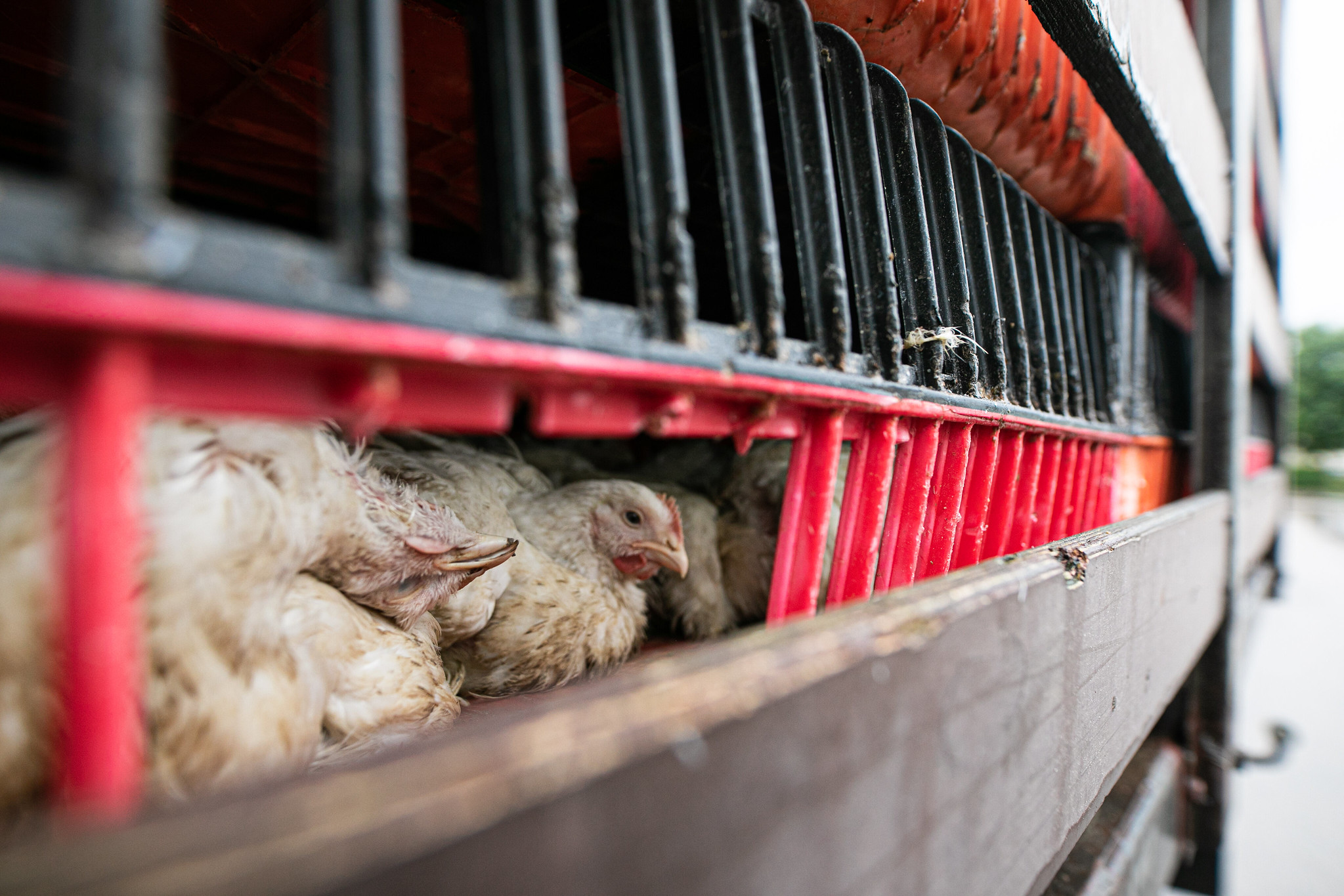
We have 30 days to take on Goliath – again
November 12, 2025
June 2, 2021
Otwarte Klatki have published the first Polish report on the transport of live animals for economic purposes. It examines in detail the situation of farm animals transported over long and short distances. The report, prepared by Jarosław Urbański of Zachodni Ośrodek Badań Społecznych i Ekonomicznych, describes, among other things, the volume of Polish animal transport, its structure, characteristics, directions, and violations of animal welfare during transport.

Enormous increase in live animal transport
Over the last 60 years, worldwide animal trade and transport have grown significantly. An increasing number of animals are transported, mainly by road transport, within the territory of individual countries, as well as in terms of international exchange.
Currently, about 2.2 billion animals are transported internationally each year, with the number constantly increasing. Significantly, 73% of all trade is attributable to exports to and imports from European Union countries (2019).
A significant increase in such transport has also been observed in Poland, and this rise became particularly evident after Poland’s accession to the European Union in 2004. The increase in meat production and changes in the organisation of animal farming (such as its concentration) had a notable impact. The increase was also influenced by the lifting of a number of international trade restrictions.
Over 90% of journeys involving live animals in Poland occur internally, about 4% are related to imports and exports, with transit accounting for only a small part – presumably around 1%. The vast majority of animals are transported by truck.

How are animals transported?
On the domestic market, in terms of weight, birds (mainly chickens) account for over 50% of total transport, followed by pigs and cattle (cows and oxen), which represent 34% and 15%, respectively. Fish and small ruminants (sheep and goats) account for a tiny proportion. In international trade, birds and pigs are also the major groups.
The total weight of animals transported in Poland amounts to ca. 11 million tonnes per year. In 2019, this number included: 1.9 million head of cattle, 21 million pigs, around 1.2 billion birds, over 13 million edible fish (excluding aquarium fish), and hundreds of thousands of other animals intended mainly for slaughter. Most of these animals are transported numerous times (at least two) during their relatively short life.
Poland is one of the infamous leaders in animal transport in the EU
Since 2004, Poland’s share in the international market has increased considerably. The country became one of the key EU Member States in the live animal trade, ranking fourth (after Netherlands, Germany, and Belgium) in terms of the total number of imported and exported animals.
Regarding imports, Denmark is a major supplier, accounting for over 52% of the trade (in terms of weight). Germany dominates in terms of exports, accounting for almost 49% of the total (weightwise), of which 92% is poultry. In Poland, the international livestock trade is conducted mainly between neighbouring and/or EU countries. Lebanon, where Polish cattle is exported, is an exception.

Violations of animal welfare during transport
A Polish study revealed that almost 58% of fattening pigs and about 25% of birds suffered from injuries such as wounds, bruises, and dislocations, as a result of transport. Pigs were found to be transported in highly-crowded spaces in almost 32% of cases.
An independent analysis of data obtained during monitoring of live animal transports by the Road Transport Inspections in one of the voivodeships between 2012 and 2017 showed that irregularities were found in 16% to over 30% of inspected cases, depending on the year.
Independent investigations conducted by animal welfare organizations highlight the fact that numerous transports pose a high risk of mortality and morbidity, which are not always reflected in the statistics. Random monitoring of long-distance transports of certain genera and species of animals (for example lambs and calves) has proven that animal welfare violations are present, to a lesser or greater extent, in most, if not all of the cases.
The number of animal welfare violations is related to several factors, including journey length and time, deterioration of weather conditions (high and low temperatures are both dangerous for animals), and the stocking density in transport (both too high and too sparse a density can be dangerous).
Some studies suggest that, surprisingly, short routes may entail greater damage to the animals’ condition, possibly due to the quality of local roads, for example. Consequently, it seems crucial – in the authors’ opinion – that attention be paid not only to the duration of the journey (“up to” or “over” eight hours) and the issue of international animal trade but also to the need for a drastic reduction in the number of journeys involving live animals.

What actions are needed to improve animal welfare?
The report has been published in response to the dreadful conditions in which animals are transported and the lack of appropriate legal regulations. We hope that the publication will serve as an incentive to change the law and will improve the welfare of animals suffering terribly in overcrowded trucks, as well as during loading and unloading.
The report was created as a part of our campaign against long-distance live animal transport, Stop The Trucks. We encourage you to support our actions, e.g. by signing the petition in which we call for a complete ban on long-distance live animal transportation.

Author: Klaudia Sitko
Photos: Andrew Skowron | more photos
Read the full report here.